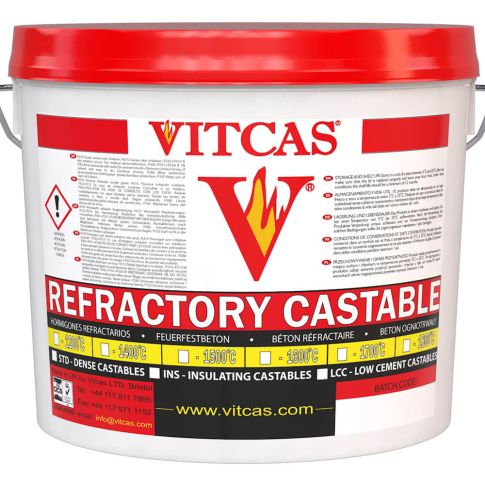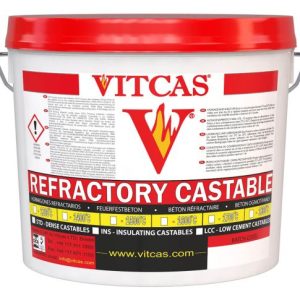Specialized construction material, heat-resistant concrete, is used for lining various types of furnaces and boilers. It performs exceptionally well in high-temperature structures.
High-quality heat-resistant concrete can withstand temperatures up to 1400 degrees Celsius. Offered by Vitcas, it comes as an economically packaged mix to be combined with water. This building material is commonly used for lining the interiors of heating devices, such as furnaces or boilers, and also finds application in muffle furnaces and industrial boilers. High-temperature-resistant concrete can also be used to create an arch brick base in a drying kiln cart in a boiler. Additionally, it is used to cast floors in furnaces and can serve for the maintenance of heating equipment. With its use, wall and floor castings are created within the reach of heating structures, protecting these surfaces from extreme heat and fire hazards.
Heat-Resistant Concrete – The Perfect Lining for Furnaces and Boilers
The high-temperature-resistant concrete available at Vitcas is a mix with low density and low thermal conductivity, significantly enhancing the efficiency of furnaces and boilers. This building material provides excellent thermal insulation. It contains bauxite with a low cement content and high alumina content. Heat-resistant concrete is designed for extreme conditions and is thus used in areas such as furnace hearth blocks, the interior of steel ladles, or throats of iron-mixing ladles and chimneys. It is also suitable for constructing bread ovens, smokers, fireplaces, or grills.
You May Also Be Interested In:
Building a blacksmith’s cooker: materials and advice
Flame-resistant fabrics, it’s resistance to high temperatures
Heat-resistant concrete is a construction material used for building and maintaining high-temperature devices and structures. It performs excellently as thermal insulation, effectively retaining heat.

